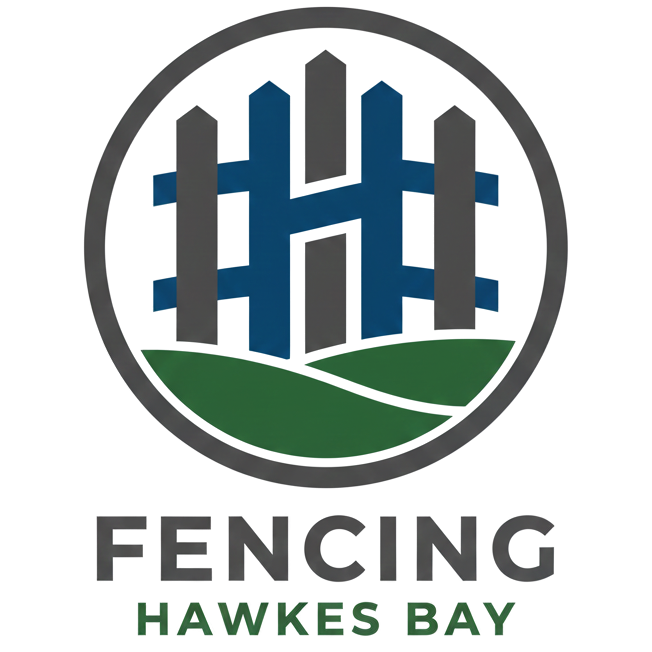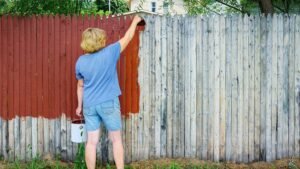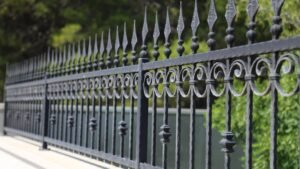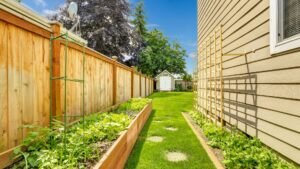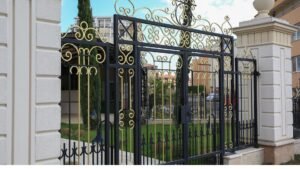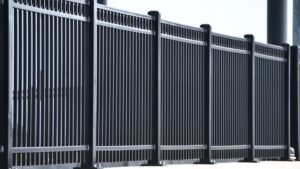Welcome to our comprehensive guide on selecting the best types of fencing in New Zealand. Whether you’re a homeowner looking to enhance privacy, a developer aiming to secure a property, or a farmer needing robust solutions for livestock, the right fence can significantly impact functionality, aesthetics, and even property value. In this guide, we’ll explore a variety of fencing materials suited to New Zealand’s unique climate and diverse landscapes, provide insights on local regulations that might affect your choice, and help you navigate the myriad options available. Our goal is to equip you with the knowledge to make an informed decision that meets both your needs and budget. So, let’s dive in and discover the perfect fence for your property.
When choosing the best type of fencing in New Zealand, consider factors such as material durability, maintenance needs, and specific uses whether for privacy, security, or aesthetics. Popular options include wooden fencing, which offers a classic look with varieties like pine and cedar but requires regular maintenance; vinyl fencing, known for its durability and minimal upkeep, making it ideal for a long-lasting, pest-resistant option; aluminum fencing, which is lightweight yet sturdy and suits both residential and commercial properties with a sleek, modern appearance; and wire fencing, best suited for rural areas, primarily used for livestock containment and available in forms like barbed wire or electric fencing for added security. The right choice depends on your specific needs, budget, and the environmental conditions of your locale.
Table of Contents
Understanding The Basics Of Fencing In New Zealand
Fencing in New Zealand serves multiple purposes, ranging from ensuring privacy and security to managing livestock effectively. Whether you’re a homeowner looking to create a secluded backyard, a business aiming to secure its premises, or a farmer needing to contain animals, understanding the basics of fencing in this region is crucial.
The Purpose of Fencing in New Zealand
Privacy: In residential areas, homeowners often install fences to provide a private space where families can enjoy outdoor activities away from the prying eyes of neighbors and passersby.
Security: For both residential and commercial properties, fences act as a deterrent against trespassers and burglars, ensuring the safety of the occupants and protecting valuable assets.
Livestock Management: In rural New Zealand, where agriculture plays a significant role in the economy, fencing is indispensable for containing livestock such as sheep, cattle, and deer. Proper fencing helps in managing these animals, preventing them from straying and protecting them from predators.
Legal Considerations and Local Regulations
When planning to erect a fence in New Zealand, it’s important to be aware of local regulations and legal considerations that may affect your plans:
Boundary Issues: It’s crucial to know exactly where your property lines are. Disputes over boundaries are common, and having a clear understanding of your property limits can save you legal headaches.
Height Restrictions: Different regions may have different rules regarding how high a fence can be. This is particularly important in residential areas where blocking a neighbor’s view can lead to disputes.
Material Restrictions: Some local councils may have restrictions on the types of materials you can use, especially in historic or special character areas where the aesthetic must be preserved according to specific guidelines.
Resource Consent: For certain types of fences, especially those that exceed prescribed heights or are built with unusual materials, you might need to obtain resource consent from your local council.
Fencing is more than just installing barriers around your property. In New Zealand, it involves a good understanding of the purpose behind the fence, the legalities, and the local council regulations. Proper planning and compliance with these factors will ensure that your fencing project not only meets your needs but also adheres to legal standards, thereby avoiding future disputes and problems. Whether for privacy, security, or livestock management, the right fence, built within the right legal parameters, can provide peace of mind and add value to your property.

Types Of Fencing Available In New Zealand
Choosing the right fencing for your property in New Zealand can greatly enhance its aesthetics and functionality. Whether you’re looking for privacy, security, or simply to mark boundaries, understanding the various types of fencing available can help you make an informed decision. Here’s a comprehensive guide to the most popular fencing types in New Zealand: wooden, vinyl, aluminum, and wire fencing, each with its unique characteristics, benefits, and maintenance requirements.
Wooden Fencing
Wooden fencing is a timeless choice that offers a natural look and can be tailored to suit any landscape. The most popular types of wood used in New Zealand include pine and cedar, known for their durability and aesthetic appeal.
Pros and Cons
Pros: Wooden fences can be easily customized in terms of height and design, provide natural insulation, and are environmentally friendly.
Cons: They require regular maintenance such as painting or staining to prevent decay and are susceptible to termite damage.
Maintenance Tips
Regular maintenance is crucial to extend the lifespan of a wooden fence. This includes applying a protective sealant every few years to guard against weather damage, as well as checking for any signs of rot or insect infestation periodically.
Vinyl Fencing
Vinyl fencing is a modern alternative that offers exceptional durability and a variety of design options. It’s made from a type of plastic, which makes it resistant to weathering, decay, and pests.
Pros and Cons
Pros: Vinyl fences are low maintenance, long-lasting, and available in multiple colors and styles without the need for painting.
Cons: They can be more expensive upfront compared to other materials and may become brittle and crack in extremely cold weather.
Maintenance Advice
Vinyl fencing is relatively easy to maintain. It typically requires just a wash with soap and water to keep it looking new. Avoid using abrasive cleaners which can scratch the surface.
Aluminum Fencing
Aluminum fencing is favored for both residential and commercial properties due to its strength, elegance, and versatility. It’s particularly suitable for areas with high exposure to moisture or saltwater.
Pros and Cons
Pros: Aluminium fences are lightweight, rust-resistant, and require minimal upkeep. They offer a sleek, modern look that can boost curb appeal.
Cons: While durable, aluminum can be prone to dents and may not provide as much privacy as other options.
Care and Maintenance
Aluminum fencing is easy to care for, needing only occasional cleaning with a mild detergent and water. Inspecting for any loose fittings or damage routinely can also help maintain its condition.
Wire Fencing
Wire fencing is ideal for rural properties in New Zealand, offering effective solutions for large boundary marking and livestock containment. Common types include barbed wire and electric wire fencing.
Pros and Cons
Pros: Wire fencing is cost-effective, easy to install, and highly versatile. It’s effective for controlling livestock and delineating property boundaries.
Cons: It offers little in terms of privacy and can pose a risk to wildlife and pets if not properly maintained.
Maintenance Tips
Maintaining wire fencing involves regular checks for any breaks or rust, ensuring electric fences have a reliable power source, and keeping vegetation from interfering with the wires.
In conclusion, when choosing fencing for your property in New Zealand, consider not only the aesthetic and functional aspects but also the long-term maintenance requirements. Each type of fencing offers unique benefits and challenges, making it important to select the one that best meets your specific needs and environmental conditions.
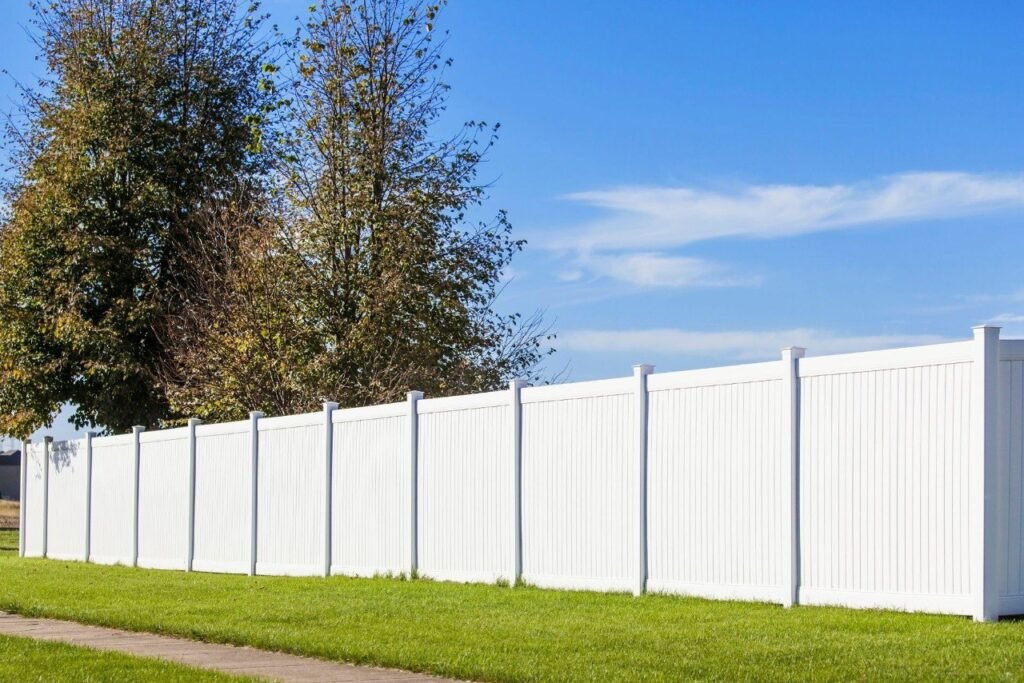
Factors To Consider When Choosing Fencing
When it comes to selecting the right fencing for your property, there are several key factors you should consider to ensure you make the best choice for your needs. Whether you are focused on enhancing your property’s security, boosting its aesthetic appeal, or accommodating climate conditions in New Zealand, understanding these factors can guide you to the perfect fencing solution. Below, we delve into the essentials of choosing fencing, from climate considerations and budget planning to aesthetic preferences and security needs.
Climate and Environmental Factors
New Zealand’s climate is renowned for its diversity, ranging from the wet, temperate conditions of the North Island to the colder, sometimes harsher environments of the South. This variety in weather patterns significantly influences the choice of fencing materials. Materials like vinyl and PVC are highly resistant to moisture and decay, making them suitable for more humid areas. On the other hand, wood, while popular for its natural look, may require more maintenance in these conditions. Metal fences, such as aluminum and steel, offer durability in coastal areas where salt air might corrode other materials. Understanding the specific needs of your locale can ensure the longevity and durability of your fencing investment.
Budget Considerations
Cost is a pivotal factor in the decision-making process for fencing. Initial outlay, maintenance costs, and the lifespan of materials all play crucial roles. For instance, while wooden fences might offer a lower upfront cost, they typically require regular treatment and repairs to combat weather wear and tear, potentially elevating long-term costs. Conversely, materials like composite or aluminum might demand a higher initial investment but are cost-effective over time due to minimal maintenance needs. Evaluating your budget against these factors will help you understand which fencing type represents the best long-term investment for your property.
Aesthetic Preferences
The style of fencing you choose plays a significant role in enhancing your property’s curb appeal. Fencing should complement the existing style of your home and landscaping. For a modern look, materials like wrought iron or sleek, horizontal wooden slats might be preferable. Traditional properties often benefit from the classic charm of picket fences or the sturdiness of stone. Color choices also affect how the fencing blends with or stands out from your property’s overall theme. Considering these elements can lead you to a fence that not only meets practical needs but also contributes positively to the aesthetic value of your property.
Security Needs
Security is a paramount concern for many property owners when choosing fencing. The right fence can act as a deterrent to intruders while ensuring the safety of the residents. Features like height, the difficulty of scaling, and the robustness of materials are critical when assessing a fence’s security capabilities. Metal fences are often recommended for high-security needs due to their strength and durability. Additionally, the design of the fence can influence its security level; options with minimal horizontal bars offer fewer opportunities for climbing, enhancing their effectiveness as a security barrier.
In conclusion, when choosing fencing for your property in New Zealand, consider the environmental conditions, your budget, aesthetic preferences, and security needs. Each factor plays a crucial role in guiding you to the fencing that best suits your requirements, ensuring that your investment is both practical and appealing.
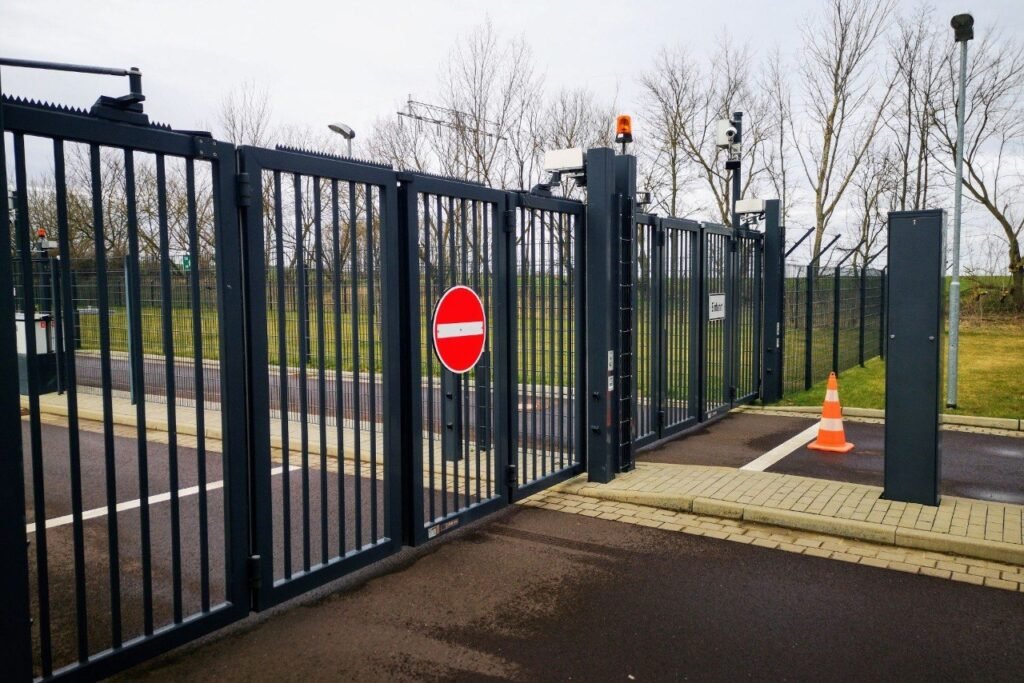
Installation Tips And Best Practices
When it comes to installing a fence, whether for privacy, security, or aesthetic purposes, understanding the best practices and common pitfalls can make a significant difference in the durability and functionality of your fence. This article provides detailed insights into the decision between DIY and professional installation, along with advice on how to sidestep common installation errors.
DIY vs. Professional Installation
DIY Installation
Opting for a DIY fence installation can be a rewarding project, especially for those who enjoy hands-on work and have some basic construction skills. It allows for greater control over materials, design, and timing. However, DIY installation requires thorough planning and preparation. It’s crucial to be knowledgeable about local zoning laws and property lines and to have the right tools and materials. A successful DIY installation also demands a basic understanding of construction principles like measuring, leveling, and post-setting.
Professional Installation
Hiring a professional to install your fence is advisable if you’re looking for convenience, expertise, and efficiency. Professional installers bring years of experience, which means they can handle a wide range of materials and complex terrain. They can also foresee potential issues and mitigate them before they become problems. Although professional services come at a higher cost, the investment often translates into a quicker installation and a more durable fence, ensuring compliance with local codes and regulations.
Common Pitfalls in Fence Installation and How to Avoid Them
Inadequate Planning
One of the most significant pitfalls in fence installation is insufficient planning. This can lead to issues like encroaching on a neighbor’s property or violating local zoning laws. To avoid these complications, it’s essential to conduct a thorough survey of your property lines and consult local building codes and homeowner association regulations before beginning your installation.
Poor Material Choice
Selecting inappropriate materials for your fence can lead to premature wear and maintenance headaches. Consider factors like climate, the purpose of the fence, and maintenance levels when choosing your materials. For instance, while wood fences are popular for their aesthetics, they require regular maintenance and may not be the best choice in damp or termite-prone areas.
Improper Post Setting
The stability of a fence is heavily dependent on how well the posts are set. Common errors include not digging deep enough post holes or failing to use the proper concrete and anchoring techniques, which can result in a fence that wobbles or leans. Ensure that post holes are dug to at least one-third the height of the fence, and use concrete to secure the posts, allowing adequate time for them to set before proceeding with the rest of the installation.
Neglecting Gate Installation
Gates are often an afterthought in many fence projects, which can lead to functional issues later on. Ensure the gate is properly sized for entry and exit points, and consider the direction of the swing and the type of latch that will best suit your needs. Also, pay extra attention to the installation of gate posts, as these will bear more use and carry the weight of the gate.
Whether you choose to install your fence yourself or hire a professional, being aware of the common pitfalls and best practices can lead to better results. By investing the proper time into planning, selecting the right materials, and understanding the nuances of installation, you can ensure that your fence is both aesthetically pleasing and enduring. Remember, a well-installed fence not only enhances the privacy and security of your home but also contributes to its overall value and curb appeal.

Maintenance And Care For Different Fencing Types
Proper maintenance and care are essential to extend the lifespan and preserve the appearance of your fence, regardless of its type. Whether you have a wooden privacy fence, a wrought iron gate, or a vinyl enclosure, each material requires specific upkeep to remain functional and attractive. Here’s a comprehensive guide to help you ensure that your fencing stays in prime condition for years to come.
Routine Maintenance Tips for Longevity and Appearance
Wood Fencing
Wood is a popular choice for fencing due to its natural appearance and cost-effectiveness. To keep a wooden fence looking great and lasting longer, regular maintenance is crucial:
Staining and Sealing: Apply a waterproof sealant or stain every two to three years to protect the wood from moisture, which can lead to rot and warping.
Cleaning: Use a power washer on a low setting or a simple solution of soap and water to remove dirt and mildew. This not only keeps your fence looking fresh but also prevents decay.
Vinyl Fencing
Vinyl fencing is prized for its durability and low maintenance, but it still requires some care to keep it in top condition:
Regular Cleaning: Wipe down your vinyl fence with a cloth or sponge and a non-abrasive cleaner to keep it free from dirt and stains.
Inspection: Check for any cracks or loose posts and panels. Although vinyl is highly durable, it can become damaged by severe weather or impact.
Metal Fencing (including Aluminum and Wrought Iron)
Metal fences are known for their strength and longevity, but they can be prone to rust and corrosion if not properly maintained:
Rust Prevention: For iron fences, apply a coat of rust-inhibiting primer followed by a paint designed for metal surfaces.
Regular Cleaning: Use soapy water and a brush to clean off any accumulated grime or oxidation, then rinse with clean water.
Repair and Upkeep Advice Based on Material
Wood Fencing
Replacing Damaged Boards: Inspect your fence regularly for rotting or damaged boards. Replace them as necessary to prevent further damage to adjacent panels.
Tightening Loose Fasteners: Screws and nails can become loose over time. Tighten them or replace them with corrosion-resistant hardware to maintain structural integrity.
Vinyl Fencing
Panel Replacement: If a panel becomes cracked or broken, replace it promptly to maintain the integrity and appearance of your fence.
Post Checks: Ensure that fence posts are firmly anchored in the ground. Refill holes with dirt or gravel as needed for stability.
Metal Fencing
Touch-Up Paint: To prevent rust and maintain aesthetic appeal, touch up any scratched or chipped paint promptly.
Joint and Weld Inspections: Regularly check the joints and welds in metal fencing for signs of weakness or rust. Repair them to prevent structural failures.
Caring for your fence properly not only enhances the curb appeal of your property but also secures your investment by prolonging the life of the fence. Regular maintenance and timely repairs are key to ensuring that your fencing remains a functional and beautiful part of your landscape for many years.

Case Studies And Success Stories
When considering fencing solutions for your property, whether residential or commercial, understanding real-life examples and hearing directly from those who’ve undertaken such projects can be invaluable. In New Zealand, diverse locales present unique challenges and opportunities for fencing, making case studies and success stories particularly insightful. Here, we explore examples of successful fencing projects across various NZ locales, supplemented by testimonials from both homeowners and professionals.
Understanding the Terrain: Fencing Across New Zealand’s Diverse Landscapes
New Zealand’s topography varies dramatically from the lush, rolling hills of the North Island to the rugged, mountainous terrains of the South Island. Each locale demands specific fencing solutions that cater to its environmental and aesthetic needs. For instance, coastal properties may require corrosion-resistant materials to withstand the salty air, whereas rural areas might focus on robust fencing to contain livestock effectively.
Case Studies of Successful Fencing Projects
The Auckland Privacy Enhancer: In Auckland’s suburban areas, a homeowner wants to increase privacy without sacrificing style. The solution was a high, wooden slat fence that blended seamlessly with the garden’s existing aesthetics. The project not only enhanced the homeowner’s privacy but also added to the property’s overall value.
Christchurch’s Earthquake-Resilient Fencing: Post-earthquake rebuilding in Christchurch included innovative fencing projects designed to withstand seismic activities. One notable example was the installation of flexible fencing materials that could absorb shock without collapsing, ensuring durability and safety.
Rural Fencing in Waikato: A large farm in Waikato needed fencing that could contain cattle and withstand the elements. The solution was a combination of traditional wood and electric fencing, which proved effective and economical, keeping the livestock secure and the farm running smoothly.
Testimonials from Homeowners and Professionals
Testimonials from those who have invested in these projects provide insight into the practical and aesthetic benefits of well-designed fencing. A homeowner from Wellington shared, “The new fence not only looks great but has given us peace of mind regarding security and privacy.” Meanwhile, a fencing contractor from Dunedin noted, “Working with durable materials suitable for the Otago climate has ensured our fencing solutions last longer and require minimal maintenance.”
Why These Success Stories Matter
These case studies and testimonials are more than just stories; they are a testament to the importance of choosing the right materials, designs, and professionals for fencing projects. They also highlight the adaptability required to address the specific needs of different locales within New Zealand.
For anyone planning a fencing project, these success stories provide not only inspiration but also practical guidance that can help in making informed decisions. Whether you are a homeowner seeking privacy and security, or a professional needing robust and reliable solutions, understanding these examples can lead to better outcomes for your own projects.
By examining these real-life examples, potential clients can gain confidence in their fencing decisions, equipped with knowledge of what works best in various environments and scenarios across New Zealand.
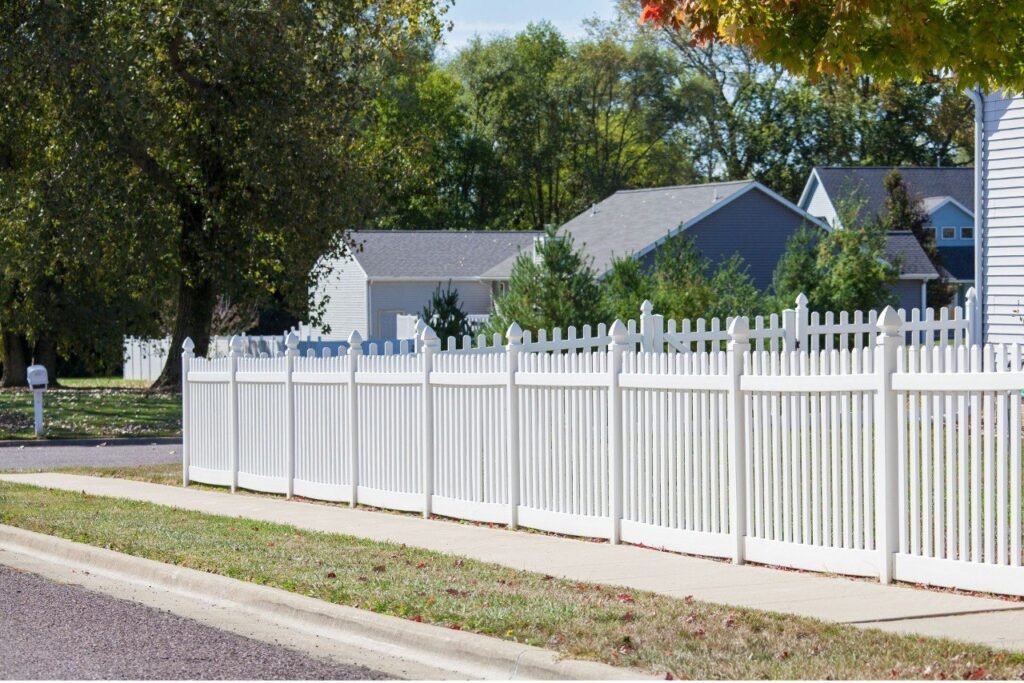
FAQs: About Best Types Of Fencing NZ
1. What are the most durable types of fencing in New Zealand?
Vinyl and aluminum fencing are among the most durable options available. Both materials withstand harsh weather conditions and require minimal maintenance, making them ideal for New Zealand’s varied climate.
2. How often should wooden fences be maintained?
Wooden fences should be inspected annually for signs of wear such as rot or insect damage. They typically require staining or painting every three to five years to maintain their appearance and durability.
3. Are there specific fencing types that are better for coastal areas?
Aluminum fencing is particularly suitable for coastal areas due to its resistance to corrosion and rust. Vinyl is also a good choice as it does not degrade from salt and moisture exposure.
4. What is the most cost-effective fencing material?
While the initial cost may vary, wire fencing is generally the most cost-effective option, especially for large areas such as farms. For residential properties, pine wood fencing can be a more affordable choice among the wooden options.
5. Can I install a fence by myself, or should I hire a professional?
DIY installation is possible for simpler fencing types like wooden panels or wire fencing. However, for materials like aluminum or vinyl that require specialized tools and techniques, professional installation is recommended to ensure stability and longevity.
6. What are the best fencing options for privacy in urban areas?
Wooden slats and vinyl fences are excellent for privacy in urban settings. They provide a solid barrier that helps reduce noise and block visibility into your property.
7. How do I choose the right fence for my property’s style?
Consider the architectural style of your home. Traditional homes may benefit from the natural look of wood, while modern homes might look best with aluminum or vinyl fences due to their clean lines and smooth finishes.
8. Are there any legal restrictions on fencing I should be aware of?
Yes, local council regulations may dictate the height, materials, and placement of fences, especially in urban areas. It’s important to check with your local council before beginning any fencing project.
9. What are the pros and cons of electric fencing?
Electric fencing is an effective barrier for containing livestock and deterring predators. Its main advantages are affordability and ease of installation. However, it requires regular maintenance to ensure the electric current is consistent and may not be suitable for all types of animals or residential areas.
10. How can I ensure my fence withstands New Zealand’s harsh weather conditions?
Choose materials known for their weather resistance. Treat wooden fences with weatherproofing products, ensure metal fences are powder-coated or made from corrosion-resistant materials, and check and maintain your fence regularly to address any issues before they lead to significant damage.
Conclusion
In concluding our discussion on choosing the right fencing, it’s essential to revisit key considerations that impact your decision, including the purpose of the fence, material choices, design aesthetics, and local regulations. Whether your primary need is for security, privacy, or enhancing your property’s visual appeal, selecting the right materials be it wood, metal, vinyl, or composite is crucial for durability and maintenance. Additionally, ensure your choice complements your home’s architecture and adheres to local zoning laws, particularly in regions with specific climate conditions that can influence the longevity of fencing materials. By thoughtfully balancing these factors with your personal needs and local requirements, you can make an informed choice that not only meets your functional needs but also enhances the aesthetic value of your property.
About the Author:
Mike Veail is a recognized digital marketing expert with over 6 years of experience in helping tradespeople and small businesses thrive online. A former quantity surveyor, Mike combines deep industry knowledge with hands-on expertise in SEO and Google Ads. His marketing strategies are tailored to the specific needs of the trades sector, helping businesses increase visibility and generate more leads through proven, ethical methods.
Mike has successfully partnered with numerous companies, establishing a track record of delivering measurable results. His work has been featured across various platforms that showcase his expertise in lead generation and online marketing for the trades sector.
Learn more about Mike's experience and services at https://theleadguy.online or follow him on social media:
